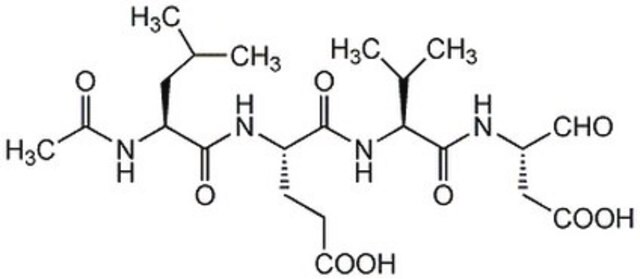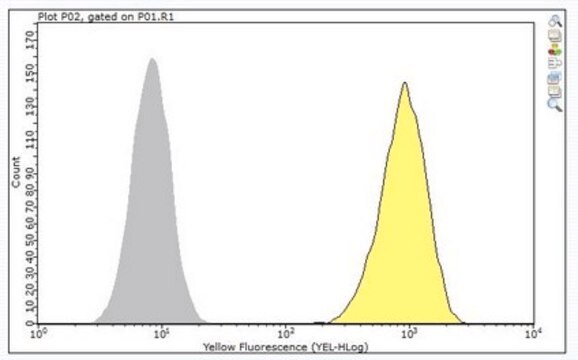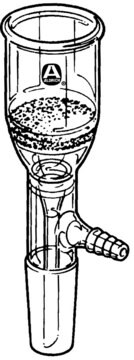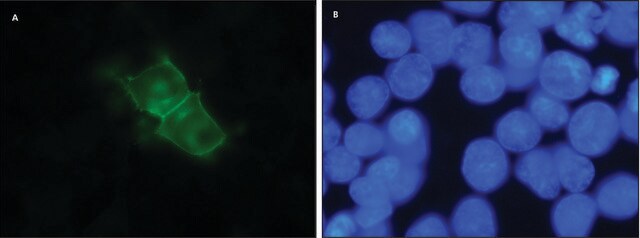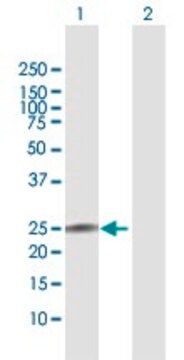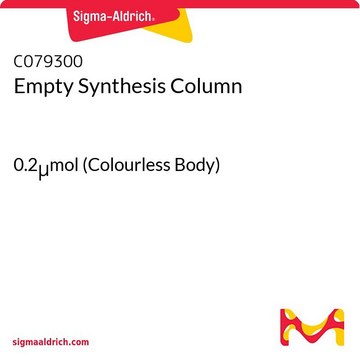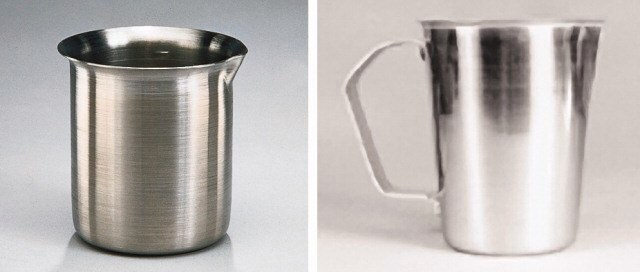MABC1596
Anti-Tex19.1 Antibody, clone 7TEX-1F11
clone 7TEX-1F11, from mouse
Sinonimo/i:
Testis-expressed protein 19.1, mTex19.1, Testis-expressed protein 19A
About This Item
Prodotti consigliati
Origine biologica
mouse
Forma dell’anticorpo
purified immunoglobulin
Tipo di anticorpo
primary antibodies
Clone
7TEX-1F11, monoclonal
Reattività contro le specie
mouse
Confezionamento
antibody small pack of 25 μg
tecniche
ELISA: suitable
immunocytochemistry: suitable
immunohistochemistry: suitable (paraffin)
immunoprecipitation (IP): suitable
western blot: suitable
Isotipo
IgG2bκ
N° accesso NCBI
N° accesso UniProt
modifica post-traduzionali bersaglio
unmodified
Informazioni sul gene
mouse ... Tex19.1(73679)
Descrizione generale
Specificità
Immunogeno
Applicazioni
Immunocytochemistry Analysis: A representative lot detected Tex19.1 in Immunocytochemistry applications (Tarabay, Y., et. al. (2013). Hum Reprod. 28(8):2201-14).
ELISA Analysis: A representative lot detected Tex19.1 in ELISA applications (Tarabay, Y., et. al. (2013). Hum Reprod. 28(8):2201-14).
Immunoprecipitation Analysis: A representative lot immunoprecipitated Tex19.1 in Immunoprecipitation applications (Tarabay, Y., et. al. (2017). J Cell Sci. 130(8):1463-1474).
Western Blotting Analysis: A representative lot detected Tex19.1 in Western Blotting applications (Tarabay, Y., et. al. (2013). Hum Reprod. 28(8):2201-14;Tarabay, Y., et. al. (2017). J Cell Sci. 130(8):1463-1474).
Signaling
Qualità
Immunohistochemistry (Paraffin) Analysis: A 1:250 dilution of this antibody detected Tex19.1 in mouse testis tissue sections.
Descrizione del bersaglio
Stato fisico
Stoccaggio e stabilità
Altre note
Esclusione di responsabilità
Non trovi il prodotto giusto?
Prova il nostro Motore di ricerca dei prodotti.
Certificati d'analisi (COA)
Cerca il Certificati d'analisi (COA) digitando il numero di lotto/batch corrispondente. I numeri di lotto o di batch sono stampati sull'etichetta dei prodotti dopo la parola ‘Lotto’ o ‘Batch’.
Possiedi già questo prodotto?
I documenti relativi ai prodotti acquistati recentemente sono disponibili nell’Archivio dei documenti.
Il team dei nostri ricercatori vanta grande esperienza in tutte le aree della ricerca quali Life Science, scienza dei materiali, sintesi chimica, cromatografia, discipline analitiche, ecc..
Contatta l'Assistenza Tecnica.